Messerschmitt Bf 109. Difficult start
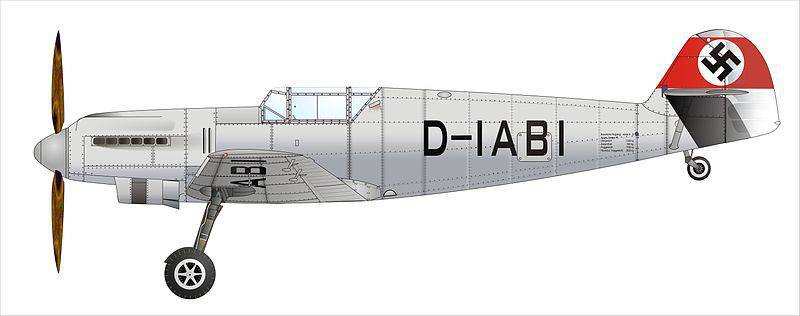
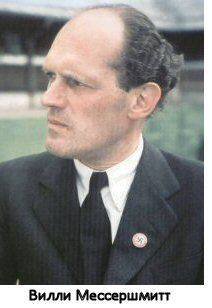 The end of the twenties did not foreshadow anything good for Willy Messerschmitt (Wilhelm Emil Messerschmitt). On the one hand, the world economic crisis sharply narrowed the sales markets, and on the other hand, it was a burden of previous mistakes. Developed for the German state airline Deutsche Lufthansa (DLH) passenger plane M 20, which had so many hopes, 26 February 1926 was crashed on the first flight. The pilot tried to escape, but did not have enough height to open the parachute. Lufthansa's director, Erhard Milch, immediately broke the contract, which was of vital importance for the Messerschmitt company.
The end of the twenties did not foreshadow anything good for Willy Messerschmitt (Wilhelm Emil Messerschmitt). On the one hand, the world economic crisis sharply narrowed the sales markets, and on the other hand, it was a burden of previous mistakes. Developed for the German state airline Deutsche Lufthansa (DLH) passenger plane M 20, which had so many hopes, 26 February 1926 was crashed on the first flight. The pilot tried to escape, but did not have enough height to open the parachute. Lufthansa's director, Erhard Milch, immediately broke the contract, which was of vital importance for the Messerschmitt company.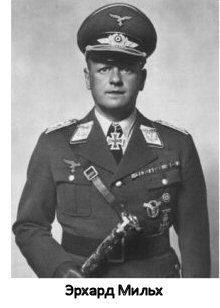 True, the output turned out to be two more prototypes, which showed good results in tests, and Milch, reluctantly, after long negotiations, agreed to renew the contract. Encouraged by Messerschmitt ordered to ship both aircraft to the customer and engaged in the preparation of serial production M 20. However, the plant did not even have time to lay the stocks, as the planes that were run-in at Lufthansa crashed one by one, burying eight Reichswehr officers under their rubble. This incident received a wide public response and was the subject of proceedings in the Reichstag.
True, the output turned out to be two more prototypes, which showed good results in tests, and Milch, reluctantly, after long negotiations, agreed to renew the contract. Encouraged by Messerschmitt ordered to ship both aircraft to the customer and engaged in the preparation of serial production M 20. However, the plant did not even have time to lay the stocks, as the planes that were run-in at Lufthansa crashed one by one, burying eight Reichswehr officers under their rubble. This incident received a wide public response and was the subject of proceedings in the Reichstag.Milch attacked Messerschmitt with public accusations, unilaterally canceled an order for the production of 10 aircraft of this type and demanded the return of funds. The press relished Milch's words that Messerschmitt "produces dangerous planes and is indifferent to the victims of his designs." 1 June 1931, Bayerische Flugzeugwerke - BFW (Bayerische Flugzeugwerke - BFW), a partner of which Messerschmitt Flugsoygbau GmbH (GMGH), was a partner of the company, declared bankrupt GMROH (Messerschmitt Flugzeugbau GMBH).
However, Willy Messerschmitt was not the kind of person who gives up on failure. The excellent organizer, using various legal inaccuracies found in the contract with Lufthansa, he forced the company to restore the order for the 20 M planes and, at the same time, the prototype of the high-speed mail monoplane M 28, which was developed according to its specifications. At the same time, Messerschmitt managed to get an order for the creation of a two-seater sports plane M 29, intended for participation in international races between the capitals of European states, which were to be held in 1932.
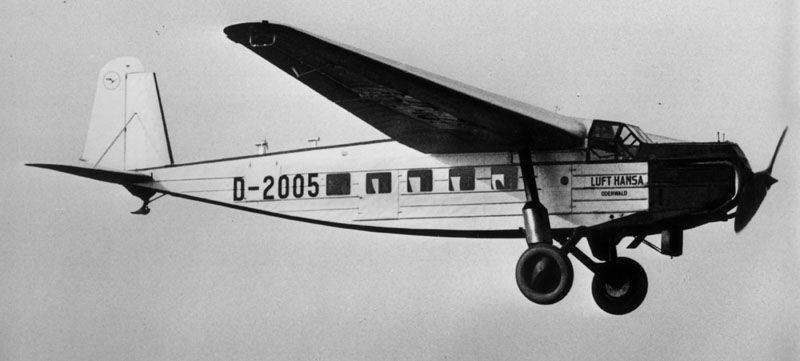
All this opened up certain prospects for BFV. Bankruptcy petition was withdrawn, and Willy Messerschmitt became the head of the company. But trouble does not come alone. Both prototypes of the M 29 crashed, and clouds gathered over the company again. And then there's the Secretary of State for aviation became the former director of Lufthansa, Erhard Milch, who had an open hostility towards Messerschmitt after a sadly lost lawsuit. Milch’s intrigues deprived BFV of participating in competitive state projects for the creation of new aviation equipment, but the rapid development of the Luftwaffe, caused by the fascists coming to power, required a sharp increase in aircraft production, so Messerschmitt was allowed to engage in the licensed construction of Dornier and Heinkel machines ( Heinkel). Despite everything, this allowed the company to survive and even increase the staff.
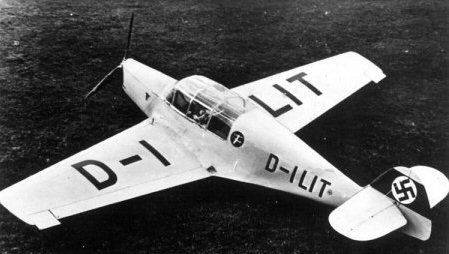
In an effort to keep a small team of designers, Messerschmitt did not stop searching for orders. Finally, fortune smiled at him. His deputy Rakan Kokotaki (Rakan Kokotaki) managed to sign a contract with Romania to build two airplanes - the 36 transport M and the training 37 M. Milch tried with the help of the Gestapo to accuse Messerschmitt of neglecting state interests "while the nation was in dire need of aircraft builders," but he managed to prove the compelled nature of his actions under conditions of artificial restriction in orders. It was a victory.
In 1933, Messerschmitt legally received a state order for the development and manufacture of six copies of a two-seater tourist aircraft, which was to take part in an international competition in Italy next year. There was little time to think, so Messerschmitt decided to base the construction of the 37 M machine.
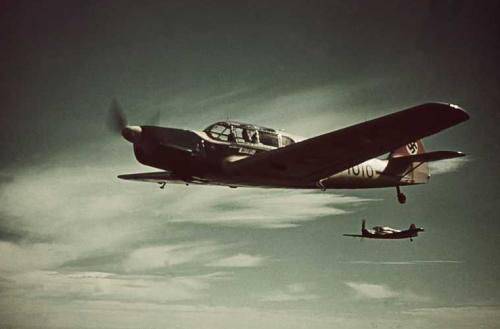
The new aircraft received the designation Bf 108 (Bf - Bayerische Flugzeug) and was a two-seater (later four-seater) free-carrying low plane with a semi-monocoque metal construction with a working casing, secret riveting, a closed cabin and a retractable landing gear with a tail crutch. A small one-spar wing design was patented by Messerschmitt. On the wing, automatic Handley Page slats and slotted flaps were installed to provide maximum load-bearing properties. The aircraft was equipped with a Hir HM 8U engine with an 250 horsepower. (or Argus (Argus) As 17 218 horsepower), and could reach speeds of 320 km / h. The prototype was flown in February 1934. All noted the excellent maneuverability of the aircraft (especially after replacing the spoilers with ailerons), which was provided by powerful wing mechanization. Despite the fact that Bf 108 did not manage to win the main prize in Italy, the glory of a reliable high-speed tourist plane was fixed to the car.
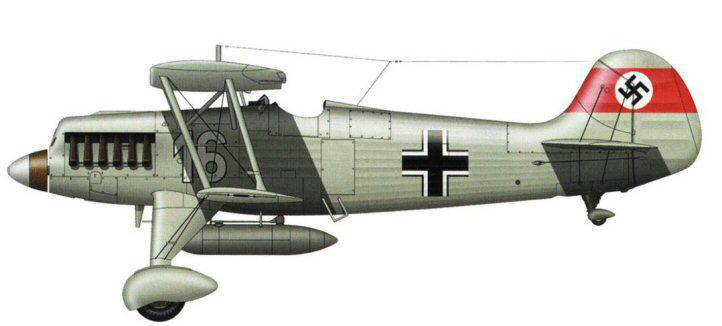
Having come to power, the new leadership of Germany set a task for the aviation industry in the shortest time to equip the army with the newest aircraft. In the initial period of the construction of the Luftwaffe, the advantage was given to bomber aircraft as the basis of the state’s air power. Fighter aviation was assigned the supporting role of defense equipment. At the beginning of the 30-ies in the military aircraft of Germany, and other European countries, there was a "interesting" situation - the bombers began to bypass speed fighters. In order to restore the “status quo”, fighters needed a jump in speed of at least 100 km / h. The He 51 biplane fighter bored by the Luftwaffe units did not meet modern tactical and technical requirements and did not stand out among its opponents in other countries. The intelligence service informed that in the USSR the fighter of the monoplane I-16 scheme is being tested, and the British are already working on a project of such a machine. This circumstance did not suit the command of the Luftwaffe and in the depths of the technical department of the Ministry of Aviation (Technisches Amt Reichsluftfahrtministerium - T-Amt RLM) the intensive work on the specification of the new fighter began to boil.
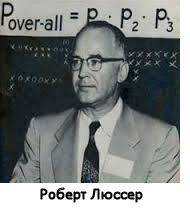 Many colleagues of Willy Messerschmitt said that he possessed a colossal
Many colleagues of Willy Messerschmitt said that he possessed a colossal 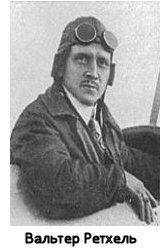 the gift of foresight and the heightened instinct of the researcher. Feeling confident in their abilities, correctness and availability of selected technical innovations incorporated in the design of Bf 108, Messerschmitt, at his own peril and risk, decides to start working on the concept of a modern fighter. No sooner had the mascara dried on the Bf 108 drawings, as on the drawing boards of the design department of his company, the first sketches of the overall appearance of the new combat vehicle appeared. It should be noted here - and all this acknowledges that the great merit of Messerschmitt is the fact that he managed to create a cohesive design team in which famous aircraft designers Robert Lusser, Hubert Bauer and Walter Rethel worked at different times ( Walter Rethel). The latter began his career as an aviation designer in the years of the First World War, therefore his vast experience and extensive academic knowledge allowed him to embody the most advanced technical ideas of the time in the new fighter.
the gift of foresight and the heightened instinct of the researcher. Feeling confident in their abilities, correctness and availability of selected technical innovations incorporated in the design of Bf 108, Messerschmitt, at his own peril and risk, decides to start working on the concept of a modern fighter. No sooner had the mascara dried on the Bf 108 drawings, as on the drawing boards of the design department of his company, the first sketches of the overall appearance of the new combat vehicle appeared. It should be noted here - and all this acknowledges that the great merit of Messerschmitt is the fact that he managed to create a cohesive design team in which famous aircraft designers Robert Lusser, Hubert Bauer and Walter Rethel worked at different times ( Walter Rethel). The latter began his career as an aviation designer in the years of the First World War, therefore his vast experience and extensive academic knowledge allowed him to embody the most advanced technical ideas of the time in the new fighter.At the beginning of 1934, the specifications for the new fighter and the manufacture of three prototypes were obtained by Arado, Focke Wulf and Heinkel. An interesting fact is that the T-Amt RLM based on the specification (Rüstungsflugzeug IV) for the single-seat fighter took the offers of the Aradot and Heinkel firms, which they developed at the beginning of 1933. According to the specifications of the most general formulations, the combat the machine had to be designed according to a nizkoplan scheme with data that ensure sufficient structural strength for diving with the engine running and at the exit of the spin. The maximum speed of at least 400 km / h at an altitude of 6000 m the plane had to hold for 20 min. The total time of the aircraft in the air - 90 min. The wing load was limited to 100 kg / m2. As a power plant, it was proposed to use an 12-cylinder liquid-cooled engine, which Junkers and Daimler-Benz were working on in parallel at that time. The aircraft’s armament was to consist of at least two Rheinmetall-Borsig MG 17 machine guns of 7,92 mm caliber with 1000 ammunition for ammunition per barrel or one 20-guns with 200 ammunition for ammunition. As a priority, horizontal speed was in the first place, then rate of climb and maneuverability.
Messerschmitt has officially announced that his company has no experience in developing combat aircraft, and therefore cannot participate in the competition. At the same time, from the depths of the Ministry of Aviation, he was transparently hinted that BFV would never receive an order for the fighter’s mass production and that it was in its interest not to participate in the competition. But the head of the BFV was a “shot hare” and he understood that this fighter was his last chance to become one of the leading aviation companies in Germany. Confidence gave the successful work of the design department on the new machine. Having engaged his connections in the political leadership of the Reich - he was in friendly relations with Hess (Rudolf Hess) - Messerschmitt achieved the inclusion of "BFV" in the coveted list of contestants.
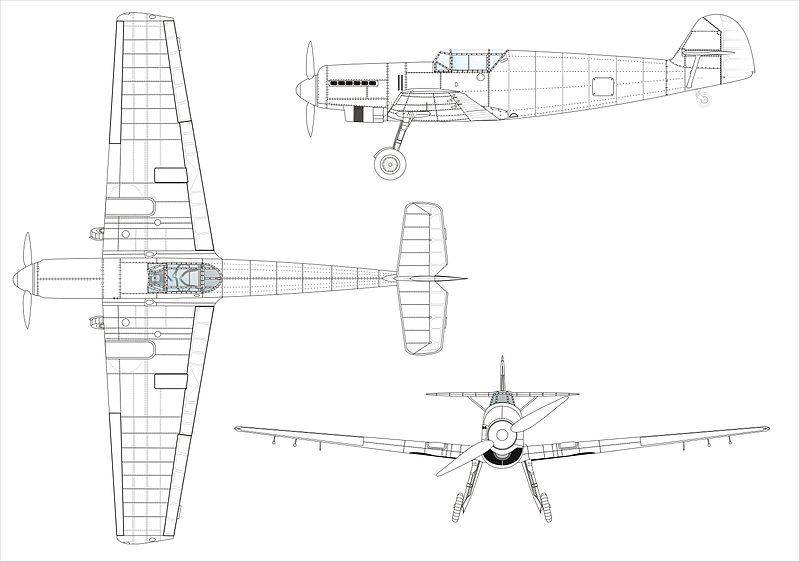
Despite the fact that the requirements for the new fighter were sent to Messerschmitt later than to other companies, at the end of 1934, the drawings of the new machine, which received the unofficial brand designation Verfolgungsjäger Bf 109 (Verfolgungsjäger - long-range fighter), were transferred to production. The aircraft was an all-metal low-wing semi-monocoque design with a cantilever wing, with slotted flaps and automatic slats, a retractable landing gear and a fully enclosed single-seater. Steering surfaces of the tail and ailerons had a linen coating. The stabilizer was made mobile, which made it possible to change the angle of its installation in flight and thereby select the most advantageous flight mode.
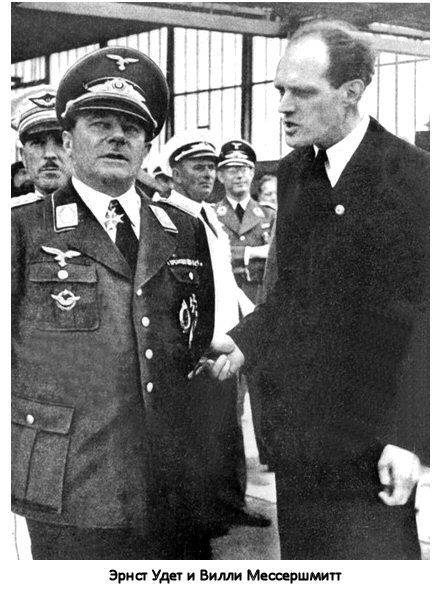 The conceptual design and aerodynamic solutions incorporated in the Bf 109, of course, were advanced and bold at that time, although, as some aviation specialists of that time reasonably said, the cleanliness of the aircraft’s lines left much to be desired. Messerschmitt, who had previously designed gliders and light aircraft, could not completely get rid of the accumulated stamps and gave his fighter angular shapes. Although it was believed that Messerschmitt specifically went for a certain deterioration of aerodynamics in favor of manufacturability.
The conceptual design and aerodynamic solutions incorporated in the Bf 109, of course, were advanced and bold at that time, although, as some aviation specialists of that time reasonably said, the cleanliness of the aircraft’s lines left much to be desired. Messerschmitt, who had previously designed gliders and light aircraft, could not completely get rid of the accumulated stamps and gave his fighter angular shapes. Although it was believed that Messerschmitt specifically went for a certain deterioration of aerodynamics in favor of manufacturability.By the way, about manufacturability. One of the most remarkable qualities of the “one hundred and ninth” was its high manufacturability, which made it possible to increase its production in the conditions of an acute shortage of qualified personnel and industrial areas.
To be fair, it should be noted that the technical solutions incorporated into the new car, except, perhaps, the original single-spar wing, were not a secret for aircraft designers. The all-metal structures of the aircraft were known as early as 1915, when Junkers demonstrated the first free-carrying aircraft of a monoplane scheme with corrugated sheet sheeting, and Dornier developed this idea in his fighter jet in 1922. The working skin was first used on airplanes by the British firm Short (Short), and the slats and slotted flaps were used by the British firm Handley Page. A closed cabin and retractable landing gear were also well known to specialists. The merit of Messerschmitt was that all these technical solutions he talentedly embodied in one plane.
The high design flight speed required a reduction in the area of the bearing surfaces, which, in turn, led to an increase in wing load (113 kg / m2). In an effort to maximally facilitate the design of the wing, Messerschmitt has placed the mount chassis struts in the fuselage. Such a constructive decision had its negative side - a relatively narrow chassis gauge. To ensure acceptable take-off and landing characteristics, the aircraft was given a large parking angle, which later played, along with a narrow gauge, its negative role in its stories and led to many flight accidents.
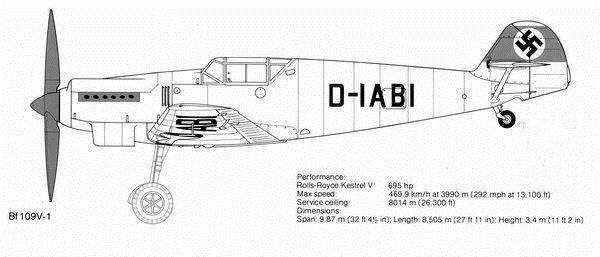
In May, the 1935, the one-hundred-ninth glider, was assembled and waited for the engine to arrive, but the Jumo 210 and DB 600 were still on the test benches of their plants. In order not to waste time, Messerschmitt decides to install on the first prototype the Kestrel V engine of the British firm Rolls-Royce (Rolls-Royce Kestrel V) with a launch capacity of 695 hp. and a two-bladed constant pitch propeller. Competitors "Arado" and "Heinkel" make a similar decision.
By August, all the installation work on the Bf 109 engine was completed. Look at the new fighter in Augsburg (Augsburg), where the assembly of the aircraft, arrived Ernst Udet (Ernst Udet). Going around the car from all sides, he was, to put it mildly, puzzled by its unusual appearance. Everything in it was strange for an experienced pilot: both the monoplane scheme, which spoke about insufficient maneuverability, and the closed cabin associated with the slammed lid of the coffin overhead, and the frail inclined landing gear that seemed to be under the weight of the plane and high the nose of the aircraft, covering the view from the cockpit on the ground, and the thin profile of the short wing, which was supposed to break under the slightest load. Approaching Messerschmitt and looking at him with sympathy, Udet uttered the phrase that entered the annals of aviation history: “This plane will never be a fighter!”
Meanwhile, ground tests of the Bf 109 began in a planned manner. The aircraft was placed on the "goats" and began to intensively check the mechanism for cleaning and release of the chassis. Then they were busy with the engine for a long time, driving it in different modes, eliminating shaking, flow of fuel and coolant. The first taxiing at the airfield, at the request of the company's oldest test pilot, Haupt-Dietrich Knötsch, Haupt-Dietrich “Bubi”, decided to do it with braced landing gear — they were so worried about this experienced pilot, although the designers swore that everything would be in order. In the process of ground tests, insufficient depreciation of the racks was identified, which required further development.
28 May 1935 Mr. Bf 109 made its first flight. All worried. It was scary to look at Messerschmitt - he stood lost in himself, reacting poorly to the questions of others. One Knoche kept an enviable calm and sometimes even allowed himself to be joking over by mechanics hovering around the car. Finally, he climbed into the cabin and steered along the runway. Departing for a short distance, the plane turned around and froze. Here the screw turned into a transparent sparkling disk, the powerful hum of the motor covered the crowd, stiffened by the tension, and the plane started off, quickly picking up speed. Exactly at the place where Messerschmitt was standing, Knoch tore off the "one hundred and ninth" from the runway and under the enthusiastic roar of the crowd went into the sky ...
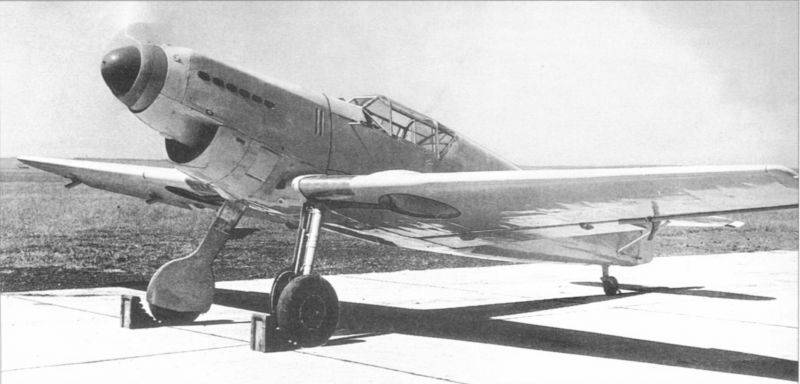
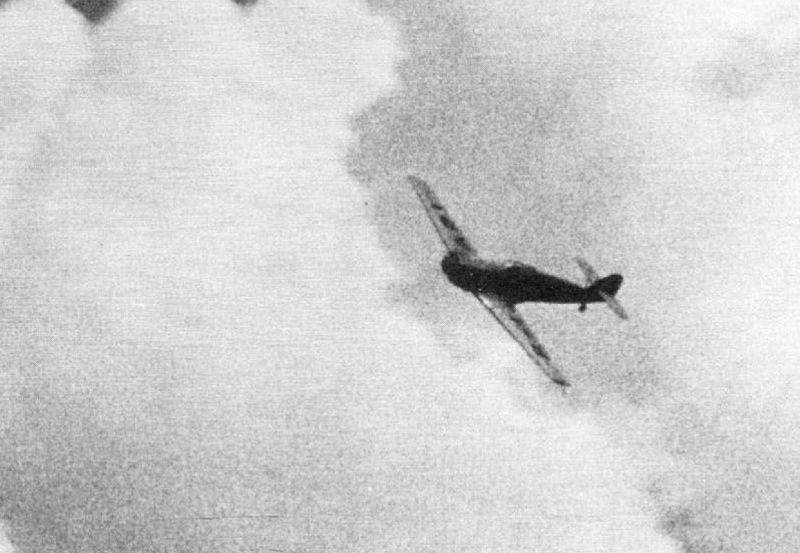
Information